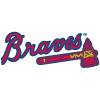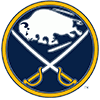The past several weeks, a group of us have been holding a series of retro drafts in which we pick a season and conduct a 12-team snake draft using standard 5x5 rotisserie scoring and roster requirements. It's part competitive and part social as there is an accompanying Zoom meeting, replete with trash-talking, catching up and reminiscing about the season being drafted. For yours truly, it's also been a laboratory.
We started with 1982, the first official year of rotisserie as we know it. RotoWire's Jeff Erickson was the inaugural winner and draft organizer Ron Shandler suggested the winner should choose the next season. Erickson selected 1990, not so coincidentally the last time his beloved Reds won the World Series. BaseballHQ bullpen guru Doug Dennis took down 1990 then promptly named 1999 as the next draft, to memorialize the year Doug first met Steve Moyer and Lawr Michaels, our friends and colleagues who sadly passed too soon.
The initial dirty dozen involved with this endeavor grew to the point we could handle two groups, so 1999 was drafted twice, by two mostly different competitors. RotoWire podcast co-host Fred Zinkie captured the first run while perennial XFL contender Jeff Winick was victorious in the second iteration. Repeating the exercise offered a great chance to study the impact of pure value versus roster construction, especially since divergent pathways resulted in victory.
By means of background, it's become apparent that not only is punting a category a viable approach, it's arguably optimal. The categories
The past several weeks, a group of us have been holding a series of retro drafts in which we pick a season and conduct a 12-team snake draft using standard 5x5 rotisserie scoring and roster requirements. It's part competitive and part social as there is an accompanying Zoom meeting, replete with trash-talking, catching up and reminiscing about the season being drafted. For yours truly, it's also been a laboratory.
We started with 1982, the first official year of rotisserie as we know it. RotoWire's Jeff Erickson was the inaugural winner and draft organizer Ron Shandler suggested the winner should choose the next season. Erickson selected 1990, not so coincidentally the last time his beloved Reds won the World Series. BaseballHQ bullpen guru Doug Dennis took down 1990 then promptly named 1999 as the next draft, to memorialize the year Doug first met Steve Moyer and Lawr Michaels, our friends and colleagues who sadly passed too soon.
The initial dirty dozen involved with this endeavor grew to the point we could handle two groups, so 1999 was drafted twice, by two mostly different competitors. RotoWire podcast co-host Fred Zinkie captured the first run while perennial XFL contender Jeff Winick was victorious in the second iteration. Repeating the exercise offered a great chance to study the impact of pure value versus roster construction, especially since divergent pathways resulted in victory.
By means of background, it's become apparent that not only is punting a category a viable approach, it's arguably optimal. The categories are compacted, resulting in winning totals that ranged from 75.5 to Zinkie's high of 83 points. The average has been 78.4, a level usually earmarked for fourth place in a "normal" 12-team league. Sometimes that total might compete for third or maybe second, but it's rarely strong enough to win.
The reason punting a category isn't wise in standard play is it decreases the margin for error. Punting one category in a 12-team league caps your maximum at 109 points. That's a winning total in most leagues, but even after punting one category, running the other nine is near impossible. It's possible to tally the 90 or so points usually needed to win, but even that is extremely difficult.
Punting two categories caps the maximum at 98, again enough to win many leagues but quite hard to pull off successfully in a regular league. However, when 78 puts you in contention and five more points almost assures a title, punting makes sense. Obviously, the stats are known, and each season's nuances can be leveraged. The decision can be made before the draft and the inventory ranked accordingly, but depending on the flow, even opting to punt mid-draft could maximize points.
One of the advantages of retro drafts and conventional valuation is each player is the only one to occupy the roster spot all season. This is a flaw when dealing with regular leagues since multiple players could occupy the same roster spot, but their value is computed assuming they're the only one. In retro drafts, this is organically satisfied.
In regular drafts, rankings usually emanate from projected auction values, which are calculated using an empirical split between hitting and pitching, with hitting getting 65 and 70 percent on the entire budget. Since we're dealing with season-ending numbers, the earnings calculation should instead incorporate a 50/50 divide.
With that as a backdrop, I embarked on a roster construction investigation, correlating team earnings to standings points. Intuitively, the greater the earnings, the higher the standings finish. Sure enough, the first 1999 draft held true to form. Data using 69/31 and 50/50 splits is included for comparison purposes.
69/31 | 50/50 | Points | |
|---|---|---|---|
| Zinkie | $302 | $293 | 83 |
| Erickson | $270 | $263 | 74 |
| Kreutzer | $222 | $271 | 71.5 |
| Karabell | $276 | $248 | 71 |
| Sporer | $274 | $278 | 67 |
| Peterson | $239 | $247 | 67 |
| VanRiper | $239 | $251 | 65.5 |
| Mason | $284 | $286 | 61.5 |
| Dennis | $234 | $210 | 61 |
| Shandler | $226 | $225 | 61 |
| Melchior | $242 | $223 | 53.5 |
| Pianowski | $226 | $201 | 44 |
| Correlation | 0.59 | 0.77 |
|
It's not a perfect correlation, but in general, more earnings led to more points, especially incorporating the proper 50/50 split. In both instances, Zinkie accrued the highest earnings. However, Justin Mason, the proprietor of The Great Fantasy Baseball Invitational, notched the second most earnings in both cases, but finished in eighth place.
Here are the standings, first with roto points, then category totals.
BA | HR | RBI | R | SB | W | SV | K | ERA | WHIP | TOTAL | |
|---|---|---|---|---|---|---|---|---|---|---|---|
| Zinkie | 10 | 4 | 10 | 12 | 8 | 9 | 2 | 12 | 8 | 8 | 83 |
| Erickson | 6 | 9 | 11 | 10 | 3 | 11 | 11 | 11 | 1 | 1 | 74 |
| Kreutzer | 11 | 1 | 1 | 2 | 12 | 4.5 | 9 | 10 | 11 | 10 | 71.5 |
| Karabell | 9 | 10 | 8 | 11 | 7 | 10 | 1 | 7 | 3 | 5 | 71 |
| Sporer | 12 | 8 | 7 | 1 | 1 | 2 | 12 | 2 | 10 | 12 | 67 |
| Peterson | 5 | 6 | 9 | 6 | 4 | 12 | 5 | 9 | 4 | 7 | 67 |
| VanRiper | 1 | 12 | 5 | 7 | 9 | 4.5 | 7 | 8 | 6 | 6 | 65.5 |
| Mason | 4 | 7 | 3 | 5 | 10 | 7.5 | 8 | 6 | 7 | 4 | 61.5 |
| Dennis | 3 | 5 | 4 | 3 | 11 | 1 | 10 | 1 | 12 | 11 | 61 |
| Shandler | 2 | 11 | 12 | 4 | 2 | 3 | 6 | 3 | 9 | 9 | 61 |
| Melchior | 8 | 3 | 6 | 8 | 5 | 7.5 | 3 | 5 | 5 | 3 | 53.5 |
| Pianowski | 7 | 2 | 2 | 9 | 6 | 6 | 4 | 4 | 2 | 2 | 44 |
BA | HR | RBI | R | SB | W | SV | K | ERA | WHIP | |
|---|---|---|---|---|---|---|---|---|---|---|
| Zinkie | 0.301 | 302 | 1255 | 1273 | 198 | 92 | 17 | 1175 | 3.624 | 1.236 |
| Erickson | 0.295 | 335 | 1258 | 1256 | 145 | 99 | 121 | 1127 | 4.041 | 1.376 |
| Kreutzer | 0.301 | 125 | 708 | 1119 | 287 | 82 | 116 | 1084 | 2.996 | 1.199 |
| Karabell | 0.299 | 346 | 1231 | 1263 | 191 | 95 | 3 | 1029 | 3.898 | 1.278 |
| Sporer | 0.294 | 327 | 1235 | 1221 | 150 | 104 | 61 | 1064 | 3.842 | 1.263 |
| Peterson | 0.303 | 332 | 1229 | 1116 | 58 | 72 | 122 | 769 | 3.073 | 1.173 |
| VanRiper | 0.265 | 380 | 1194 | 1246 | 199 | 82 | 87 | 1031 | 3.77 | 1.272 |
| Mason | 0.293 | 331 | 1160 | 1189 | 228 | 89 | 95 | 1026 | 3.657 | 1.296 |
| Dennis | 0.287 | 368 | 1264 | 1188 | 91 | 78 | 64 | 815 | 3.361 | 1.227 |
| Shandler | 0.287 | 308 | 1187 | 1145 | 257 | 45 | 119 | 549 | 2.903 | 1.198 |
| Melchior | 0.298 | 299 | 1200 | 1250 | 155 | 89 | 36 | 984 | 3.795 | 1.323 |
| Pianowski | 0.295 | 292 | 1148 | 1255 | 184 | 87 | 58 | 939 | 3.905 | 1.375 |
Before beginning, I trust everyone will understand what follows is not an indictment or critique of Mason's team. After all, I've finished a lowly 11th, 8th and 7th. It's just Mason's club best illustrates the dichotomy of points and earnings.
Batting average
Mason was .006 points ahead of the team just behind his, whereas another .003 would have resulted in three more points in the category. The "value" attributed to the .293 average exceeding the next-best .287 mark was wasted, and just missed being high enough to earn several more points.
Home Runs
Mason finished four homers ahead of the next team, which is efficient, but another five dingers would have netted two more points. It's easy to say using 20/20 hindsight, but somewhere along the line, drafting a player with a lower average but at least five more long balls could have garnered two points and maybe more, depending on the other categories.
RBI and Runs
The placement isn't as extreme, but in both instances, fewer stats were needed to go up than down.
Stolen Bases
This is another good example of unluckily wasted value, as Mason was 30 swipes from another point, but a healthy 29 more than the next squad. That's 28 bags contributing to earnings, but not points.
Wins
This was a fairly efficient place in the standings albeit not perfect as Mason was tied with one team and just three short of the next-higher club. Still, the total was near the top of a tightly bunched group, exactly where you want to be.
Saves
Here is another no-man's land finish as Mason was 21 saves behind the next team and eight ahead of the one below. However, the team two spots behind checked in with 23 saves fewer, so while those 31 saves garnered a point, it should have earned at least two more, based on distribution in the category. Again, easy to say behind a keyboard, but 30 fewer saves would have lost just one point, while using that draft pick elsewhere could have added points.
Strikeouts
Six more whiffs and Mason adds two points, meanwhile he was 42 and 87 punchouts ahead of the two teams below. This is the worst place to be; well ahead of the lower teams and just behind the clubs ahead.
No sense in piling on, I'm already guilt-ridden and owe Justin a steak for unknowingly being a good sport with the above analysis. To reiterate, it's not a panning of his draft, but an illustration of how earnings and points aren't always in sync.
Another interesting team to dissect is Peter Kreutzer's. He was attempted a Sweeney Plan, punting homers and RBI, and by extension, runs. This was a more popular ploy in 4x4 days since runs weren't a category, so only 25 percent of the categories would be forfeited, not 30 percent.
Note the discrepancy in Kreutzer's drafted earnings based on the different splits. It's clear he earmarked more high draft picks to pitching, which was necessary since he needed to crush that side of the ledger for the plan to come together. This is the reason why the Sweeney Plan was viable in the 4x4 era, as it takes advantage of market pricing. Even in a regular draft, the split should be 50/50. When drafting Sweeney, you can pay a little more than market for the pitching assets and still be below the 50/50 prices. You can even pay a premium for stolen bases, but often don't need to since the market often underpays.
The inefficiency with the Sweeney Plan is regardless of how hard you try, you're going to acquire homers and RBI, along with runs, in 5x5, although depending how things play out, a bottom finish in runs isn't necessarily guaranteed so that value may not entirely go to waste.
While matching Zinkie's outstanding 83-point total would have required an additional dozen points for Kreutzer, another five points would have had him in contention in the other league. If you were to ask Rotoman, he might tell you if he had it to do again, he'd try to win steals by fewer than 30 bags and redirect some assets towards wins or saves, where a handful of either would have resulted in multiple points, albeit with the possibility of losing ground in ratios (or, who knows, maybe even gaining).
Again, the point isn't to identify a flaw in the plan, but to illustrate how much roster construction contributes to a championship effort. Value doesn't win, it's what you do with it that counts.
As telling as these examples are, the sequel is eye-popping. With a week to study the results of the initial results, the participants in the follow-up had time to concoct specialized strategies. Plus, even though it was just one set of data, rough category targets were available. Here are the standings and category breakdown for Party Like it's 1999, take two:
BA | HR | RBI | R | SB | W | SV | K | ERA | WHIP | TOTAL | |
|---|---|---|---|---|---|---|---|---|---|---|---|
| Winick | 12 | 6 | 4 | 10 | 8 | 1 | 12 | 1 | 12 | 12 | 78 |
| McCaffrey | 3 | 12 | 12 | 3.5 | 2 | 11 | 1 | 12 | 10 | 10 | 76.5 |
| Pianowski | 1 | 11 | 9 | 9 | 9 | 10 | 11 | 9 | 2 | 2 | 73 |
| Feldman | 8 | 9.5 | 10 | 5 | 3 | 3 | 10 | 2 | 8 | 11 | 69.5 |
| Patton | 7 | 8 | 11 | 1.5 | 1 | 12 | 3 | 10 | 6 | 8 | 67.5 |
| Zimmerman | 11 | 1 | 5 | 12 | 4 | 7.5 | 4 | 5 | 11 | 6 | 66.5 |
| Shandler | 5 | 9.5 | 6 | 3.5 | 12 | 7.5 | 9 | 11 | 1 | 1 | 65.5 |
| Zola | 4 | 7 | 8 | 8 | 5.5 | 6 | 6 | 7 | 4 | 5 | 60.5 |
| McLeod | 2 | 5 | 1 | 6.5 | 7 | 9 | 7 | 8 | 7 | 7 | 59.5 |
| Cockcroft | 10 | 4 | 3 | 6.5 | 5.5 | 4 | 2 | 3 | 9 | 9 | 56 |
| Leibowitz | 6 | 2 | 7 | 11 | 10 | 5 | 5 | 4 | 3 | 3 | 56 |
| Becquey | 9 | 3 | 2 | 1.5 | 11 | 2 | 8 | 6 | 5 | 4 | 51.5 |
| BA | HR | RBI | R | SB | W | SV | K | ERA | WHIP | ||
|---|---|---|---|---|---|---|---|---|---|---|---|
| Winick | 0.305 | 309 | 1130 | 1233 | 223 | 33 | 108 | 488 | 2.661 | 1.168 | 78 |
| McCaffrey | 0.282 | 401 | 1290 | 1192 | 57 | 110 | 1 | 1293 | 3.51 | 1.25 | 76.5 |
| Pianowski | 0.27 | 379 | 1197 | 1218 | 225 | 105 | 103 | 1189 | 4.325 | 1.414 | 73 |
| Feldman | 0.296 | 328 | 1225 | 1193 | 114 | 78 | 102 | 830 | 3.575 | 1.249 | 69.5 |
| Patton | 0.296 | 319 | 1230 | 1167 | 56 | 112 | 64 | 1216 | 3.738 | 1.264 | 67.5 |
| Zimmerman | 0.303 | 228 | 1175 | 1301 | 169 | 100 | 77 | 1029 | 3.442 | 1.286 | 66.5 |
| Shandler | 0.294 | 328 | 1178 | 1192 | 238 | 100 | 101 | 1258 | 4.728 | 1.474 | 65.5 |
| Zola | 0.286 | 314 | 1191 | 1214 | 202 | 94 | 83 | 1082 | 3.832 | 1.308 | 60.5 |
| McLeod | 0.275 | 305 | 1080 | 1201 | 220 | 102 | 91 | 1137 | 3.62 | 1.276 | 59.5 |
| Cockcroft | 0.302 | 292 | 1116 | 1201 | 202 | 79 | 60 | 972 | 3.569 | 1.261 | 56 |
| Leibowitz | 0.295 | 277 | 1184 | 1278 | 226 | 90 | 79 | 997 | 4.041 | 1.326 | 56 |
| Becquey | 0.298 | 280 | 1096 | 1167 | 232 | 75 | 99 | 1059 | 3.78 | 1.315 | 51.5 |
Looks reasonable, and more tightly bunched than the original. Now here's the earnings vs. points correlation table:
69/31 | 50/50 | Points | |
|---|---|---|---|
| Winick | $257 | $213 | 78 |
| McCaffrey | $263 | $292 | 76.5 |
| Pianowski | $225 | $214 | 73 |
| Feldman | $235 | $229 | 69.5 |
| Patton | $260 | $293 | 67.5 |
| Zimmerman | $288 | $299 | 66.5 |
| Shandler | $230 | $190 | 65.5 |
| Zola | $263 | $270 | 60.5 |
| McLeod | $242 | $268 | 59.5 |
| Cockcroft | $265 | $249 | 56 |
| Leibowitz | $264 | $258 | 56 |
| Becquey | $258 | $252 | 51.5 |
| Correlation | -0.21 | -0.15 |
|
Yikes! There's a slight negative correlation, suggesting lesser earnings was actually better. Perhaps this was due to refined punting strategies, though the first five finishers in the original draft all punted at least one category.
Especially noteworthy is the championship Winick team posted the second-lowest earnings, using the truer 50/50 split. Furthermore, there was still plenty of "wasted" value on the roster, as 33 wins and 488 strikeouts went for naught. The results of this draft really hammer home how roster construction is paramount.
Winick was the first competitor to successfully exploit the lack of a rule on minimum innings. Others tried but fell short. For those wondering, there has been some mumbling about enacting an innings minimum going forward, but it hasn't been presented to and discussed by the participants. Personally, I'm fine with no minimum as 5x5 polices itself. Plus, if Winick's success spurns more people attempting this strategy, pulling it off becomes even more difficult as demand for the limited supply of players integral to its success increases.
Let's examine one more correlation by calculating earnings ignoring wins and strikeouts, and only factoring saves, ERA and WHIP, using a 50/50 split.
50/50 | Points | |
|---|---|---|
| Winick | $301 | 78 |
| McCaffrey | $238 | 76.5 |
| Pianowski | $202 | 73 |
| Feldman | $245 | 69.5 |
| Patton | $241 | 67.5 |
| Zimmerman | $284 | 66.5 |
| Shandler | $198 | 65.5 |
| Zola | $254 | 60.5 |
| McLeod | $238 | 59.5 |
| Cockcroft | $257 | 56 |
| Leibowitz | $265 | 56 |
| Becquey | $254 | 51.5 |
| Correlation | -0.03 |
|
How about that. The correlation remains essentially random, but the winner logged $17 more earnings than the next-highest total.
This poses the question, should one set their prices and ranks based on their intended strategy or market expectations? Why not both?
Truth be told, too many people enter an auction with only a skewed set of bid prices, based on their preconceived splits and predetermined category approach. While it obviously helps to know the relative potential of the pool in context with your strategy, the goal is still to maximize efficiency based on market pricing. For example, if your league historically spends 69 percent on hitting but you want to dedicate 60 percent of your budget to bats, don't run the numbers at 60/40. Do it at 69/31 but only spend 60 percent of your budget on sticks. Using the 60/40 prices as a guide, you'll never buy a bat and be willing to go the extra buck (or more) on every pitcher. Similarly, if you're punting steals, don't exclusively run 4x5 values, omitting the category. Include them along with the market 5x5 expectations. This way, you know the market prices for the batters you want to target.
Aside from this advice pertaining to splits, it's fair to ask how the results of retro drafts are germane to a regular draft. As noted, assembling a team is more than piling up perceived value; it's piecing it together in a winning combination. Next time, we'll jump back to the Winning Tendencies series, illustrating successful and not-so-successful roster builds using the 2019 National Fantasy Baseball Championship Main Event.
For those interested, here are the picks, standings and rosters of the two 1990 drafts.
We're doing a 1986 retro draft Wednesday, May 27. If you'd like to follow along, here's the link.
Pardon the gratuitous plug, but I designed the Google Sheet tracker and am about to make it commercially available. If interested, follow me on Twitter or drop me an email.
























